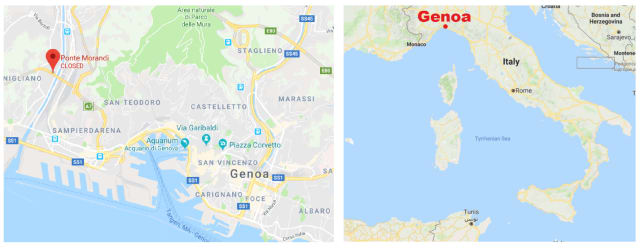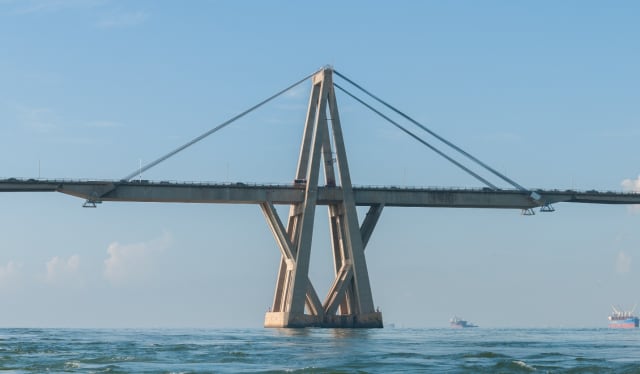The remains of the Morandi Bridge, after a section collapsed. (Image courtesy of The Daily Sabah.)
On Aug. 14, Morandi Bridge in Genoa, Italy, collapsed, sending vehicles and tons of rubble to the ground 150 feet below and killing 43 people.
Witnesses said the bridge was struck by lightning during a thunderstorm before it crumbled, though lighting alone should not have felled the bridge. Preliminary investigation points to a combination of poor design, questionable building practices and insufficient maintenance.
The Ponte Morandi

The site of the Ponte Morandi in Genoa, Italy. (Image courtesy of Google Maps.)
The Morandi Bridge, finished in 1967, is named after the civil engineer who designed it: Riccardo Morandi, who died in 1989. Before its collapse, it stretched 3,878ft, connecting the A10 motorway toward France and A7 to Milan. Popular for both commercial traffic and local vacationers, the bridge formed an arterial connection between France and Italy.
The bridge was very much a signature Morandi piece. The cable-stayed bridge deck was made from reinforced concrete. The cables linking the towers to the deck were covered in concrete. Like Morandi’s 1957 design for the General Rafael Urdaneta Bridge in Venezuela, the trestles of the bridge formed a double V: one of the Vs carried the roadway beam, while another one, upside-down, supported the upper tie rods.

The General Rafael Urdaneta Bridge in Venezuela was built with the same stay and pylon…

